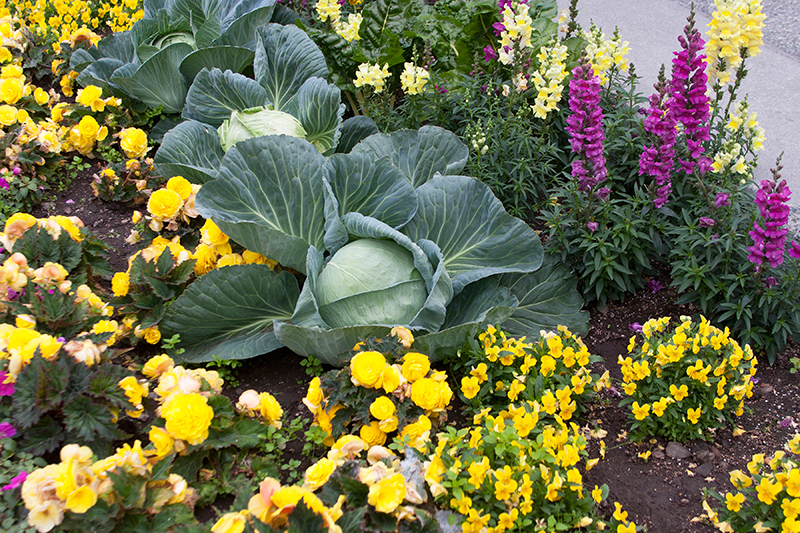
Fort Bend County Master Gardeners Share January Gardening Tips
This information has been generously provided to Fort Bend County residents free of charge by the Fort Bend County Master Gardeners, an expert group of trained volunteers assisting Texas A&M AgriLife Extension Service in educating the community using research-based horticultural information. To learn more about their resources and events, visit fbmg.org.
A gardener’s work is never done. While it is cooler outside you might want to tackle some of those harder labor tasks. Alternatively, keep your feet up and make plans to maintain and improve your landscape. Here are some things that may need your attention this month.
-
Do you have trouble keeping track of your plants and their needs? A gardener’s journal may be just the solution you are seeking. Start one this month with notes about what plants are planted, where they are planted and then add information about what each one needs. Throughout the year, you can track plant fertilization, problems, bloom times and so much more information. These notes may help you make decisions in the future based on what works and what did not. Journals can be paper or electronic. Just make sure to use something easy for you. Learn how to keep a garden journal.
-
If you had a live tree for the holidays, you will want to recycle it responsibly. Learn how to safely dispose of Christmas trees.
-
Evaluate your gardens for potential changes this year. Look for worn grass that might be replaced with paving stones, overgrown shrubs that block windows, and similar problems to tackle throughout the year. Many of us make an extra effort so our home has curb appeal. Just as important as curb appeal is window appeal! How do your gardens appear from inside your home? Enhancing your landscape with hardscapes, such as walkways and retaining walls, might also be considered. The Earth-Kind landscape planner can help you with this.
-
If you have St. Augustine grass, you will want to make sure you keep fallen leaves off it. It may not go completely dormant and still needs sunlight. Learn more about year-round St. Augustine lawn care.
-
Fallen fruit from fruit and nut trees should be cleaned up to reduce the pests and diseases stemming from rotting fruit. Learn more about caring for fruit and nut trees.
-
Plant roses and bare-root fruit and nut trees. The longer these plants have to grow roots, the more resilient they will be during the heat of summer. Use the Earth-Kind® Plant Selector to help choose the best ones for your garden.
-
If you have shrubs or small trees you want to relocate, this is the month to do so. You will work up less of a sweat while it is cooler and the plant will have more time to recover before summer. Learn how to transplant your small trees and shrubs.
-
Did you get a poinsettia over the holidays? Learn how to care for your poinsettia so it can last past the holiday season.
-
Gather up materials to protect immovable plants during freezes. Learn how to protect your plants.
-
Prune dormant deciduous trees and shrubs while they are not growing. Learn the Earth-Kind® techniques to properly prune your plants.
-
Prune dormant ornamental grasses to about 2 – 4 inches tall so they will be more attractive when the growing season begins. Many vines and groundcovers can also be pruned this month. Many groundcovers can be mowed at the highest setting to trim them back. Watch this video to learn how to trim common groundcovers.
-
Start seeds indoors for late winter or spring planting. These might include your spring veggies such as broccoli, cabbage, cauliflower, lettuce and more. Learn how to start seeds indoors.
-
Transplant onion sets into your garden this month. Learn how to grow onions.
-
Browse seed catalogs to explore plants you may want to add in the spring and summer. New plants are developed all the time and might add some excitement to your garden. Learn about terms you might read in seed catalogs.
-
Mid-January to mid-February is the time to plant seedlings of broccoli, Swiss chard, collard greens, lettuce, onions, and many other vegetables. Learn more here. You can also plant seeds indoors for seedlings you will transplant in early spring. Learn how to grow broccoli and collards. For Swiss chard, first find the varieties recommended for our area and then learn how to grow Swiss chard.
-
If you are avoiding the cold but need a gardening fix, you might spend some time working on your indoor houseplants. They may need repotting, trimming, cleaning, or other care. Review this article about houseplant care for helpful hints.
-
One task that can be tackled during the winter is cleaning plant containers so they will be ready for spring. If you are fortunate enough to have a greenhouse, make sure to clean it well so you will be ready for spring.
-
If you have cool season annuals like pansies and snapdragons, fertilize them with a nitrogen-rich fertilizer to keep them blooming. Learn about caring for cool season annuals.
January Color in Fort Bend County
Sometimes you just need a tree. If so, the Chinkapin Oak is a Texas Superstar® sure to eventually give you all the shade you need. This medium-to-large Texas native tree is heat and drought tolerant once established and adapts to most soil types. The leaves are a lovely bronze in the fall.
-
Grows in full sun
-
Grows to height of 50 – 90 feet
-
Grows to width of 20 – 40 feet
-
Few pest or disease problems
-
Deciduous
-
Can be planted anytime from containers
For more information, visit texassuperstar.com/plants/oakchinkapin/index.html. For more information about Texas Superstar® plants, visit texassuperstar.com.
If you are looking to add some color to a dreary January garden, here are some cool season annuals to perk up your garden.
-
Ornamental Kale: Ornamental kale or ornamental cabbage is known for its lovely purple, pink, white, red-bronze, or yellow-green foliage. Growing to a size of 8 to 18 inches wide in a rosette that will eventually produce flowers. However, the foliage is really the best feature.
-
Snapdragon: This cool season annual comes in a wide variety of colors and does well in full sun to part sun. Different varieties grow from 6 inches to three feet tall.
-
Pansy: These come in a wide variety of colors that are sure to fit into your garden but plant them up front because they only grow 4 – 10 inches tall. They do best in sun or partial sun.
-
Narcissus: The narcissus family includes daffodils, jonquils, paperwhites, and narcissus. Plant these charmers in full sun and then enjoy the lovely blossoms.
-
Johnny-Jump-Up: These tri-color cuties typically have yellow, blue and purple on the same blossom. Like the other January color listed here, these will do best in sun or partial sun.
The Fort Bend Master Gardeners demonstration gardens are currently undergoing renovation but feel free to visit their demonstration gardens for ideas. Please remember to keep your distance from Master Gardeners as they work in the gardens (for their safety and to make sure they keep working). For more information, visit fbmg.org/demonstration-gardens.
Source: Fort Bend County Master Gardeners








